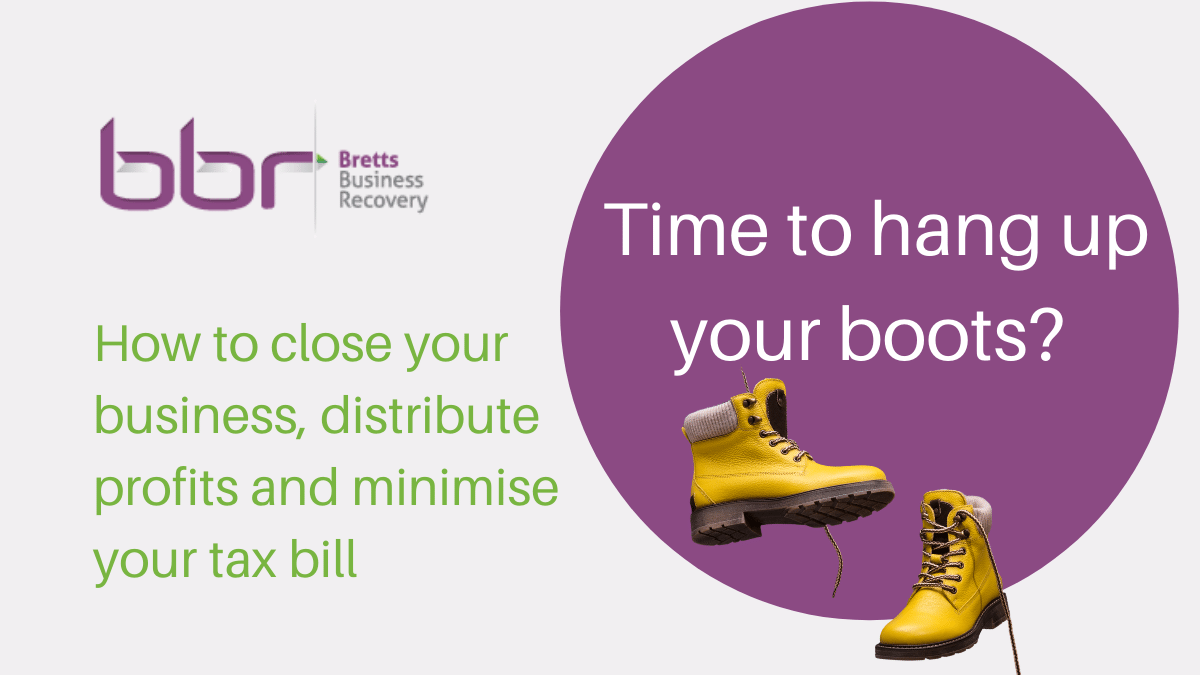Time to hang up your boots? How to close your business, distribute profits and minimise your tax bill.

If you’re looking to retire and take reserves out of your company, a Members Voluntary Liquidation may be the best strategy
Economic downturns are often seen as a time of opportunity for those willing to face the challenge head on. Contemporary business theories suggest that companies that survive during times of recession are better positioned to take advantage when the tide turns.
However, for business owners who’ve given their all already, a potentially drawn out period of adversity is a bleak and draining prospect. Understandably, many will be toying with the decision to quit whilst they’re still winning and unlock the value they’ve accumulated in their business.
Reap the rewards you’ve worked so hard for
If you’re considering retiring, or you and other shareholders decide it’s time to go your separate ways, closing your company may be the right thing to do.
If your company is solvent and you have capital and assets to settle your liabilities and distribute to shareholders, a Members Voluntary Liquidation (MVL) may be a tax-efficient and timely way to close the company and realise reserves.
A shareholder led process whereby all creditors of the company are paid in full and any remaining profits are distributed to shareholders as capital, not dividends.
Why is this a good option?
On 1 March 2012 HMRC’s ESC C16 introduced a cap of £25,000 on the amount payable on the dissolution of a company, which can be treated as a distribution of capital rather than income.
So, where a company’s profits are over £25,000, a formal liquidation (in the form of an MVL) is a financially efficient way for shareholders to take proceeds treated as capital receipts from the business that is coming to an end.
The main advantage of an MVL is that all distributions made to the shareholders in the liquidation are classed as distributions of capital, rather than income. This means:
- Capital distributions are subject to capital gains tax, rather than income tax, which is charged at a lower rate.
- The tax payable by the shareholder may be further reduced by applying the various capital reliefs that are available, including entrepreneur’s relief*, which, subject to various tests for eligibility, could mean a more favourable capital gains tax rate of just 10%.
For solvent businesses with lower profits, the costs of liquidation may make this course unfeasible, in which case directors may consider dissolving the company instead.
It’s important to get specialist tax advice from your accountant or tax advisor to explore all options explored when considering closing your solvent business.
What is the process?
If it makes good financial sense and you make the decision to proceed, the next step is for the directors to appoint an Insolvency Practitioner as Liquidator.
To prove the company is solvent, a majority of directors must swear a Declaration of Solvency, incorporating a Statement of Affairs.
- This confirms that they have made a full enquiry into the company’s financial affairs and have decided that the company can pay all its debts in full plus interest within a 12-month period.
- The Declaration of Solvency includes a simple form of balance sheet for the company, as of the date it is placed into liquidation.
The members must then pass a special resolution to wind up the company voluntarily.
The liquidator will notify all creditors, publish the appointment in the London Gazette and notify the Registrar of Companies.
Any cash held by the company is transferred to a holding account by the liquidator and distributed to shareholders once all liabilities have been paid.
Following the appointment of the liquidator, in most cases the distribution of cash will be made to the shareholders within approximately six to eight weeks (depending on HMRC response times). The liquidation will normally be closed within six months from the appointment and the company will be formally dissolved at Companies House after three months of the case being closed.
What if my business is not solvent?
If your company is insolvent (unable to pay its debts), you will need to consider other insolvency options such as a Creditors’ Voluntary Liquidation (CVL), Administration or Voluntary Arrangement.
*For more details on how an MVL works in practice and for information on eligibility criteria for Entrepreneur’s Relief, please visit: Members Voluntary Liquidation.
Is this the best approach for me?
If a company is solvent and has served its purpose, or the directors and shareholders simply don’t want to continue trading, then an MVL is a suitable solution.
Speak to a specialist advisor for a free, no-obligation consultation to determine the best option for you and how we can help.
Contact us.